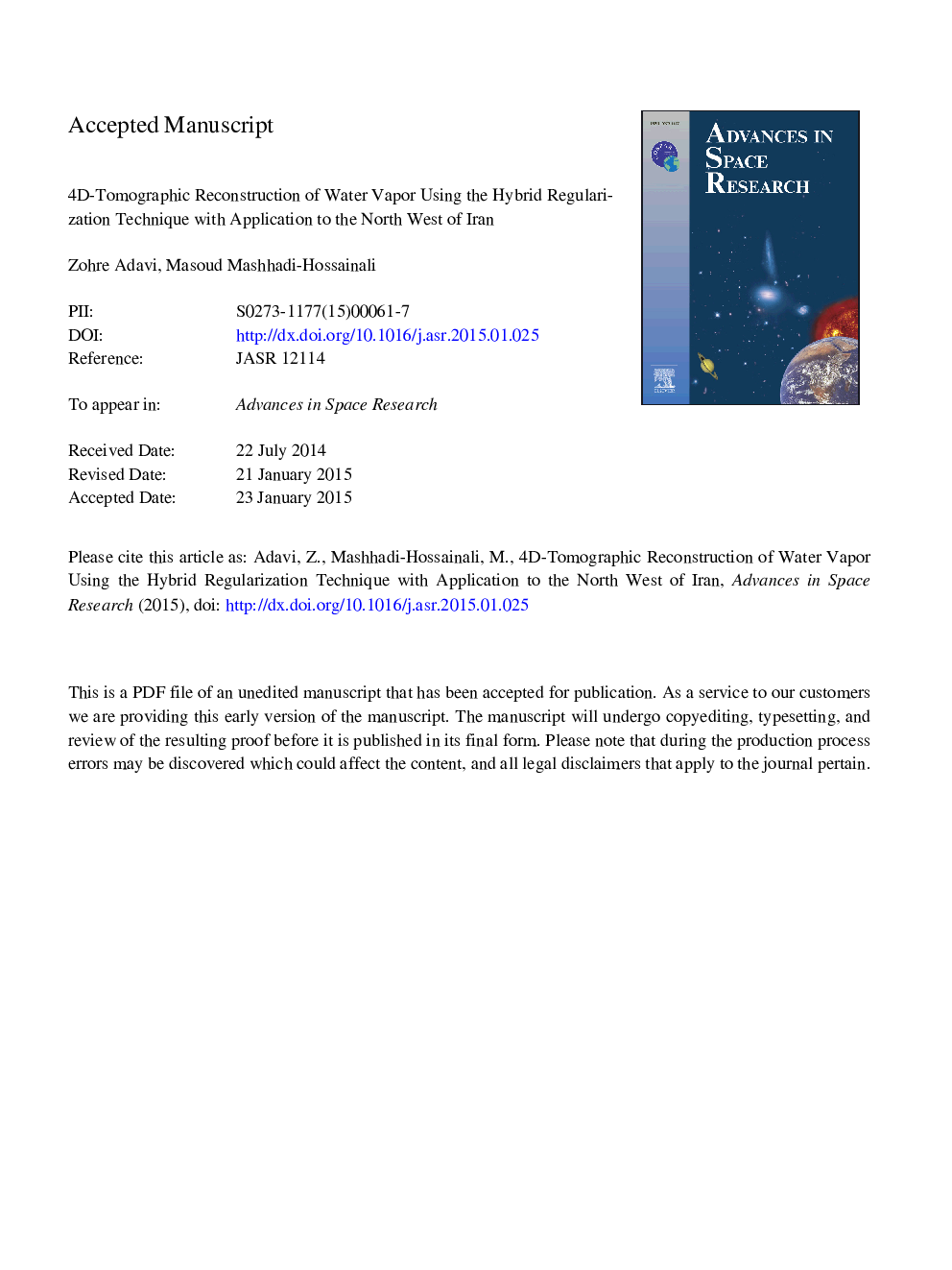| Article ID | Journal | Published Year | Pages | File Type |
|---|---|---|---|---|
| 10694399 | Advances in Space Research | 2015 | 19 Pages |
Abstract
Water vapor is considered as one of the most important weather parameter in meteorology. Its non-uniform distribution, which is due to the atmospheric phenomena above the surface of the earth, depends both on space and time. Due to the limited spatial and temporal coverage of observations, estimating water vapor is still a challenge in meteorology and related fields such as positioning and geodetic techniques. Tomography is a method for modeling the spatio-temporal variations of this parameter. By analyzing the impact of troposphere on the Global Navigation Satellite (GNSS) signals, inversion techniques are used for modeling the water vapor in this approach. Non-uniqueness and instability of solution are the two characteristic features of this problem. Horizontal and/or vertical constraints are usually used to compute a unique solution for this problem. Here, a hybrid regularization method is used for computing a regularized solution. The adopted method is based on the Least-Square QR (LSQR) and Tikhonov regularization techniques. This method benefits from the advantages of both the iterative and direct techniques. Moreover, it is independent of initial values. Based on this property and using an appropriate resolution for the model, firstly the number of model elements which are not constrained by GPS measurement are minimized and then; water vapor density is only estimated at the voxels which are constrained by these measurements. In other words, no constraint is added to solve the problem. Reconstructed profiles of water vapor are validated using radiosonde measurements.
Keywords
Related Topics
Physical Sciences and Engineering
Earth and Planetary Sciences
Space and Planetary Science
Authors
Zohre Adavi, Masoud Mashhadi-Hossainali,
